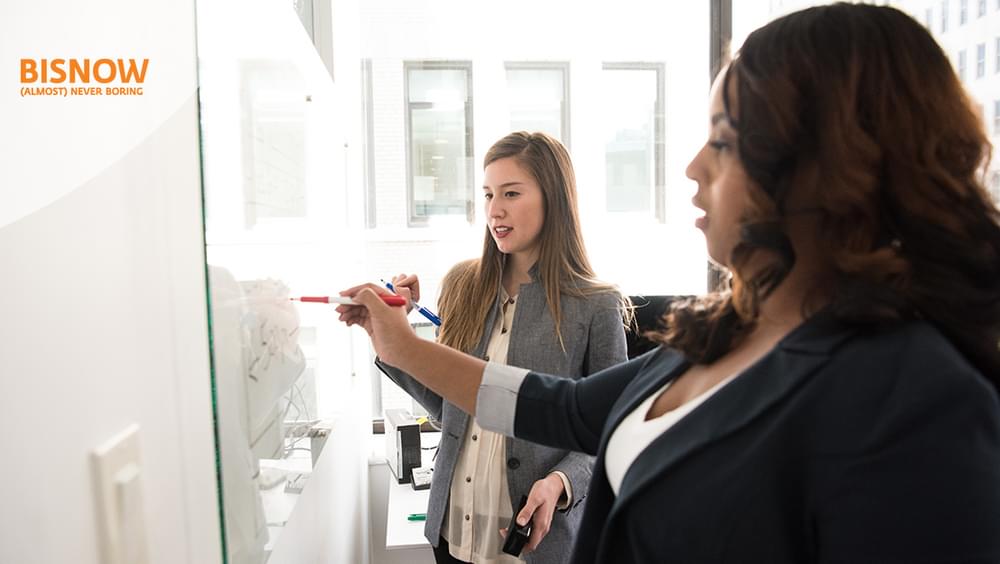For years, architects and developers have attempted to predict what the office of the future will look like. They have pointed to emerging trends like agile office layouts, sustainable design and smart technology as drivers of the next generation of work. But while these trends are based on industry demands, the office of the future is more complex.
While the office of the past has been driven by instinct, or what companies assume employees want, a number of employers are beginning to use data to drive the office of the future. These companies have begun conducting research to further understand user preferences and design an office space that aligns with employee demands.
“There are a number of ways to provide data integration in the workplace," Gardiner and Theobald Cost Management Partner Rob Webber said. "At a basic level, you can gather data from sensors or conduct a survey to influence office design features. On the other hand, you can have a fully data-enabled central office, including enhanced BMS and an across-the-floor integrated sensors network. It is understanding the vast difference between the levels of integration and subsequent cost implications on a project's budget that is key to delivering a successful and sustainable office of the future that meet clients' expectations. Data-driven office design can increase productivity and improve morale, which can make the investment worthwhile.”
"Data-driven office design can increase productivity and improve morale, which can make the investment worthwhile."
Bringing this data-driven approach to office design can also help companies attract and retain its employees, Webber said. A recent Steelcase report found that there is a strong correlation between employees who are disengaged at their job and employees who feel they have little control over their physical workspace. The reverse is also true. The majority of employees who are engaged at their jobs feel satisfied with their physical environment.
Of the 12,480 people from 17 countries surveyed, 16% of disengaged employees feel that their physical work environment helps them feel a sense of belonging to the company, compared to 98% of engaged employees. Similarly, only 15% of disengaged employees feel that their physical environment empowers them to concentrate easily, compared to 98% of engaged employees. The poll also found that in general, workers who were most satisfied had more control over their workspace than those who were dissatisfied.

Microsoft is one company applying a data-driven approach to design. The tech giant began by measuring how space is used. Instead of calculating the number of square feet per head, which is the industry standard, the company developed a process of utilisation-based planning across several of its offices. Using machine learning, Microsoft began tracking which spaces throughout the office were being used and the length of time people spent using them. This data informed decisions on space allocation and ultimately allowed the company to reduce its global footprint,
Microsoft recently began using a wireless local area network to create heat maps that record which spaces throughout the office see the most activity. The Microsoft workplace strategies team also brought in MyAnalytics, a tool that tracks and forecasts how employees work and how teams collaborate. From an office design perspective, the company can then use this data to create physical spaces that support collaboration.
Other companies have directly involved their employees in the office design process. At Adobe’s office in New York City, the company noticed that employees were unsatisfied with the current office design. Many employees preferred to work from home as opposed to coming into the office because they didn’t feel the office design supported their needs.
Instead of redesigning the office based on general trends, Adobe surveyed employees on how to improve the space. The results showed that Adobe’s employees wanted a variety of spaces to suit different purposes, that supported the seamless use of technology, and could be used for short and informal meetings. Employees also requested more shared spaces. Adobe then used this data to redesign its New York office.
It can be difficult to initiate these kinds of conversations with employees. Companies can start by asking themselves who their employees are, how much flexibility they have and what workplace behaviours they want to change, Harvard Business Review reported.
Gardiner and Theobald Project Management Partner Mark Gledhill has also seen the success of this data-driven approach firsthand. As a project manager, he works with clients to help deliver workspaces that appeal to different employee workstyles.
"Commercial office buildings must provide the right amenities such as connectivity across floorplates to create the sort of engaging office environments that facilitate collaborative working, enhance communication and boost creativity."
“Many of the clients we deliver workspace for have a strong focus on health and wellbeing and are looking for a balance between office working and home working," he said. "We are also seeing the proliferation of coworking space, which is one of the fastest growing parts of the sector, leading the way in data collection and challenging conventional landlords in what their buildings offer to those who use them. Commercial office buildings must provide the right amenities such as connectivity across floorplates to create the sort of engaging office environments that facilitate collaborative working, enhance communication and boost creativity. Data is one of the ways that can determine how to do that."
Understanding what employees like and dislike about the workplace can increase satisfaction because it lets them know they have a level of control over their workspace, integrating more space efficient solutions that respond to their requirements. Creating a space where all staff feel empowered to do their best work can benefit overall productivity, increase employee retention and create a more engaged workforce.
As emerging technology continues to redefine the way people communicate and collect information, data will begin to become the standard for office design.
This content was produced and originally published by Bisnow


